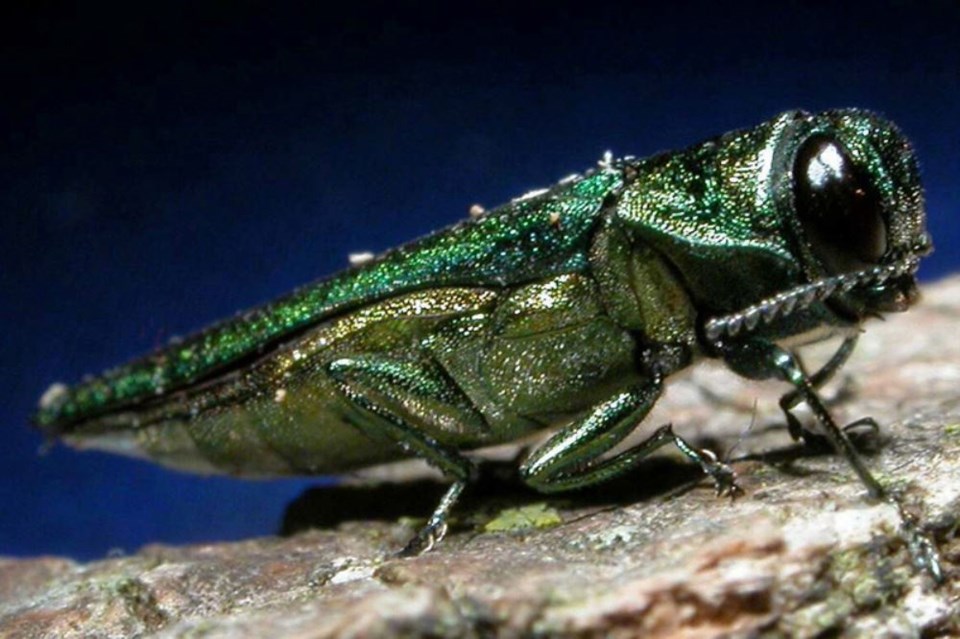Even with evidence the emerald ash borer has made its way to Thunder Bay, council is waiting to decide on a long-term plan on how to attempt to save the city’s trees.
Council on Monday night decided to refer a motion that would have set direction on how the city would protect ash trees from the invasive beetle, with options ranging from $6.3 million to $7.6 million over 10 years.
The referred resolution, which will be brought back in the fall, would have allocated $550,000 in next year’s budget to chemically treat 150 ash trees, as well as the removal and replacement of an additional 150 trees while surveying for other infested areas.
The beetle, an invasive species first found in North America in 2002 in the Detroit and Windsor area before spreading across the continent, was detected in Thunder Bay late last month near the corner of Memorial Avenue and Fourth Avenue.
Despite no other municipalities receiving contributions from senior levels of government, multiple members of council decided to try to position the city to be the first.
Coun. Andrew Foulds, took significant issue with the lack of assistance from Ontario and Ottawa.
“This is a national issue. This is a provincial issue,” Foulds said, saying the beetle could destroy 10 billion trees. “This is totally unacceptable.”
Council unanimously passed a subsequent resolution, directing the intergovernmental committee to lobby the provincial and federal governments for funding.
Administration believes it is possible the beetle has been within the city for the last three or four years.
The emerald ash borer can kill trees within two years, leaving them brittle and prone to shattering at their base, which leads to liability and hazard risks.
City forester Shelley Vescio told council the recommended approach, which includes treating a targeted number of trees in hopes of saving them and removing affected ones, is actually cost effective.
“It is less expensive to treat a tree than remove and replace it,” she said.
A report to council estimated it costs nearly $1,200 to treat a tree over a decade, while the costs of removing and replacing a tree is about $2,000.
The report determined the most expensive option would be to do nothing and simply remove trees as they die, at a cost of $7.6 million.
There are an estimated 6,300 ash trees along streets and in city parks, with the tree making up 22 per cent of the city’s tree canopy.
“We’re going to have a major shortfall,” she said. “We’re going to lose half of our canopy when we lose our maples and our ashes, or we have the potential to lose that.”
The trees play a significant role in stormwater management, energy conservation as well as environmental factors such as carbon dioxide absorption and oxygen production.
“I think we’re fooling ourselves if we think there are any solutions out there that could lower the price tag,” Coun. Iain Angus said. “We need to support this effort. We need to make sure we take every step we can next year so, at the very least, we slow this down.”
Since the initial detection of the emerald ash borer within city limits, the number of traps within the city have been increased from 60 to 128.
Councillors who approved the referral argued the delay would not affect how the city treats the problem, as the action included in the resolution is scheduled for next year. A limited amount of money has already been allocated to treat trees in the affected area this year.
